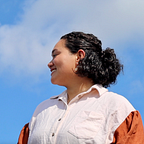Rooting Out Veganism’s Anti-Indigeneity
Before we start, let’s lay down the foundation: What is veganism?
Veganism, in its most rudimentary form, is a dietary choice. Like vegetarians, vegans refrain from consuming animal meat. Veganism, however, also goes as far as omitting animal byproducts like eggs and dairy. For many, it becomes a lifestyle.
Its basis against animal cruelty is rooted in anti-capitalistic and anti-industrialization complexes. Following the Industrial Revolution, overconsumption became more commonplace. Prior to this, people could only purchase food locally, but the introduction of steam engines allowed outsourced food to be more easily transported. Now, industrial agriculture strives to maximize output and reduce production costs. As a result, the animals living in these conditions endure poor, unsanitary livelihoods only to end up on the slaughtering block.
Colonialists introduced the industrial mindset — and by association, overconsumption — to the world. When the white colonizers landed in New England, they brought with them disregard for the land and its natural resources. This mindset still holds true, with colonizers arriving in new places and viewing these new lands as “ripe for the picking,” e.g. oil drilling in the Middle East, logging in Nigeria, and diamond mining in Botswana. Many conservation efforts worldwide are a direct result of colonialism. Think tigers, bison, whales, etc.
Ethical consumption isn’t a new concept, though. Indigenous cultures have successful at it for a long, long time, far before the arrival of settlers. It is a practice called subsistence, or sustaining oneself on the minimum, which, by definition, is the opposite of overconsumption. Yet, vegans often misdirect their anger at native people of color, or equate their traditions to commercialism.
Tribal hunting and whaling often garner negative attention and crowds of vocal protesters, or in the case of Greenpeace Canada, it becomes law. In 1976, Greenpeace would begin running a campaign against seal hunting, but they didn’t clarify the line between commercial hunting and small tradition practices. For 40 years, the Canadian Inuit struggled against anti-seal hunting laws that were targeted primarily at commercial hunters, but looped them into the equation. Though Greenpeace apologized for the anti-indigeneity caused by their campaign in 2014, the effect was widespread. Organizations like PETA continue to lobby against indigenous traditions, alongside commercialism, and Netflix’s documentary Seaspiracy (which was awash with anti-Asian sentiment and misinformation) shared an anti-Inuit petition calling to end the Canadian seal hunt on Instagram.
The Lakota Law Project’s Twitter account receives a surplus of messages from vegans or animal rights activists regularly. They responded to one message with: “There is no one on this planet that cares for seals more than the Inuit. There is no one that cares for Buffalo more than the Lakota, Cheyenne, Blackfoot and Arapaho. No one with reindeer like the Sami. No one cares for goats like the Masai.” The sentiment of their message holds true.
Indigenous peoples have an intimate relationship with the natural world. Native Americans, in particular, do not view the environment as a separate entity from the animals and the people. Instead, they are all intertwined together; they are smaller aspects of one whole. These tribes have a careful understanding of their relationship with the wilds and the other beings they share the world with, and therefore, have always been cautious not to overexploit their surroundings. If a life was taken, every part of the animal would be used to subsist their communities, either as food or in cultural practices, and their importance in the circle of life would be revered.
For example, coastal tribes will hunt a whale, divvy the meat, skin, and blubber up. One whale will provide enough sustenance for approximately two months, depending on the village’s size.
For centuries, indigenous tribes have successfully lived off the land. In places where resources are scarce, they made do. In the modern day, native peoples face different pressures — food costs in northern Canada, especially in areas with dense indigenous populations, have inflated to $28 for a head of cabbage; Native American reservations lack the Target and Whole Foods you and I may live near, and supermarkets are often more expensive than their non-reservation counterparts; and federal laws and mismanagement often lead to struggling economies.
Veganism, often depicted as the “fix-all solution” to animal cruelty, is not without its own consequences that tend to be overlooked. Even in metropolitan cities and towns, vegan alternatives are either inaccessible and/or significantly more expensive. It exists more prominently in white, upper-class neighborhoods, and in minimum in poor neighborhoods and ones with large populations of color. All the while, vegan food is produced on the back of people of color through unethical labor practices. Not to mention the rebranding of “pleather” (plastic leather) to “vegan leather,” or how the high demand of soy has been linked to deforestation.
But to indigenous people, conservation and ethicality is not a movement to be taught and followed, it is a natural way of life. Asking indigenous people to stop their subsistent practices to fix the mistakes of capitalism and industrialism is akin to asking them to apologize for being colonized.
When you, the consumer, make the choice to eat vegan, understand the veganism is a byproduct of colonialism and that indigenous people are not your enemy.
